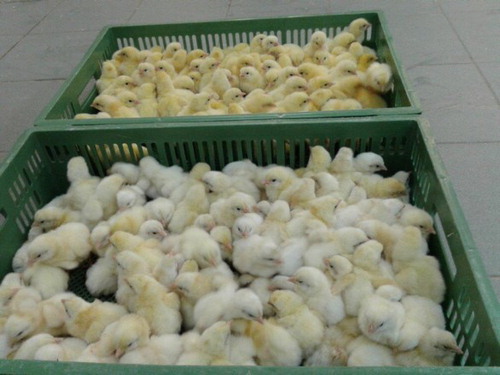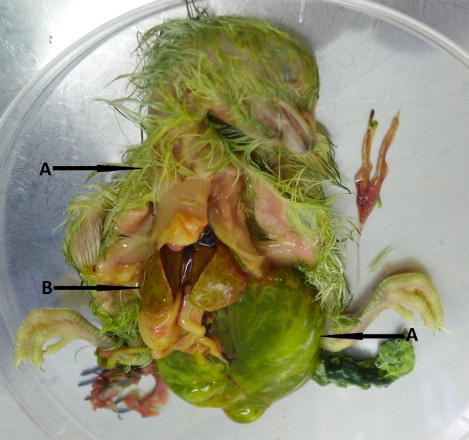Figures & data
Figure 1. One-day-old chicks originating from the flock of breeder chickens at the age of 30 weeks. Numerous chicks with whitish plumage appear next to the normal ones.

Figure 2. Selected parameters of breeder flock performance recorded for a 15 weeks period: (a) the percentage of fertilized eggs, (b) the percentage of embryos which died in the first week of development, and (c) the ratio of hatched chicks to fertilized eggs set in the incubator.

Table 1. Primers, products sizes and annealing temperatures used in the study.
Table 2. Data on examined broiler flocks originating from the same breeder flock.
Figure 3. Gross lesions in dead embryos found during experimental reproduction of “white chicks” condition. (a) Green colour of plumage, allantoic fluid and remains of yolk sac of WC-CAstV-infected embryo and (b) enlarged, pale liver with numerous pinpoint haemorrhages on the surface.

Table 3. Cloacal shedding of WC-CAstV in chickens hatched from eggs experimentally infected via the yolk sac at 8 day of embryonic development and in contact birds.
Figure 4. Phylogenetic tree of the complete amino acid sequences of the AvianAstV ORF2 available in GenBank constructed with the Clustal W method.

